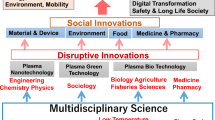Abstract
The feasibility of generating mono-disperse micro-bubbles by electrolysis in tap water using micro-fabricated devices was investigated towards the development of a high-density bubbler matrix. The effect of electrode geometry and size, as well as artificial nucleation sites, was tested using single and arrays of electrode pairs. The results indicated that circular electrode node shapes (as opposed to triangular or square nodes) nucleated bubbles from the node center and exhibited fewer instances of bubble coalescence and a higher bubble detachment frequency when operated with small anode–anode and cathode–cathode spacings. Artificial nucleation sites, produced by etching the surface of the electrodes, were shown to be able to limit nucleation to one site (though in some cases, bubbles formed underneath the dielectric layer), as well as to increase current efficiency. A device with thousands of electrode pairs (a matrix of nodes) was also fabricated in order to generate a bubble cloud close to the channel wall. At a flow speed of 14 cm/s, this device demonstrated the ability to generate a bubble cloud reasonably close to the wall 20 mm from the trailing edge of the matrix of nodes, with the void fraction peaking at 1 mm from the channel wall and returning to zero at 3 mm. It yielded efficiencies greater than similar thin-wire devices, but spurious bubbles formed on the device, indicating that additional work is needed to develop this technology in a matrix format.













Similar content being viewed by others
References
Brandon NP, Kelsall GH (1985) Growth kinetics of bubbles electrogenerated at microelectrodes. J Appl Electrochem 15:475–484
Choi BK, Ma M, White C, Liu C (1999) Electrolytic and thermal bubble generation using AC inductive powering. In: Proceedings of the 10th international conference on solid-state sensors and actuators (Transducers’99), Sendai, Japan, June 1999
Hugi C, Mueller A (1993) A camera for measuring density, size and velocity of rising air bubbles and water velocity in a bubble plume. In: Nieuwstadt FTM (ed) Flow visualization and image analysis. Kluwer, Dordrecht, The Netherlands, pp 189–205
Janssen LJJ, Sillen CWMP, Barendrecht E, van Stralen SJD (1984) Bubble behavior during oxygen and hydrogen evolution at transparent electrodes in KOH solution. Electrochim Acta 29(5):633–642
Kawamura T, Moriguchi Y, Kato H, Kakugawa A, Kodama Y (2003) Effect of bubble size on the microbubble drag reduction of a turbulent boundary layer. In: Proceedings of the 4th ASME/JSME joint fluids engineering conference, Honolulu, Hawaii, July 2003
Lee S (2003) Electrolytic microbubble injection in a water channel. M.S. thesis, Department of Mechanical Engineering, University of Illinois at Urbana-Champaign, IL, USA
Lee S, Sutomo W, Liu C, Loth E (2003) MEMS-based electrolytical microbubbler in a water channel. In: Proceedings of the 4th ASME/JSME fluids engineering conference, Honolulu, Hawaii, July 2003, FEDSM2003-45646
Loth E (2000) Numerical approaches to dilute two-phase flow. Prog Energy Combust Sci 26(3):161–223
McCormick ME, Bhattacharya R (1973) Drag reduction of a submersible hull by electrolysis. Nav Eng J 85:11–16
Merkle C, Deutsch S (1992) Microbubble drag deduction in liquid turbulent boundary layers. Appl Mech Rev 45(3):105
Pal S, Merkle CL, Deutsch S (1988) Bubble characteristics in a microbubble boundary layer. Phys Fluid 31:774–751
Rightley P, Lasheras J (2000) Bubble dispersion and interphase coupling in a free-shear flow. J Fluid Mech 412:21–59
Volanschi A, Oudejans D, Olthuis W, Bergveld P (1996) Gas phase nucleation core electrodes for the electrolytical method of measuring the dynamic surface tension in aqueous solutions. Sens Actuators B 35–36:73–79
Acknowledgements
This work was also supported by the Defense Advanced Research Projects Agency (DARPA) under grant MDA972-01-C-0042 with Dr. Lisa Porter as the technical monitor.
Author information
Authors and Affiliations
Corresponding author
Rights and permissions
About this article
Cite this article
Lee, S., Loth, E. & Liu, C. Micro-bubbles generated on electrolytic arrays and matrices and released in a water channel. Exp Fluids 38, 672–682 (2005). https://doi.org/10.1007/s00348-005-0950-3
Received:
Revised:
Accepted:
Published:
Issue Date:
DOI: https://doi.org/10.1007/s00348-005-0950-3




